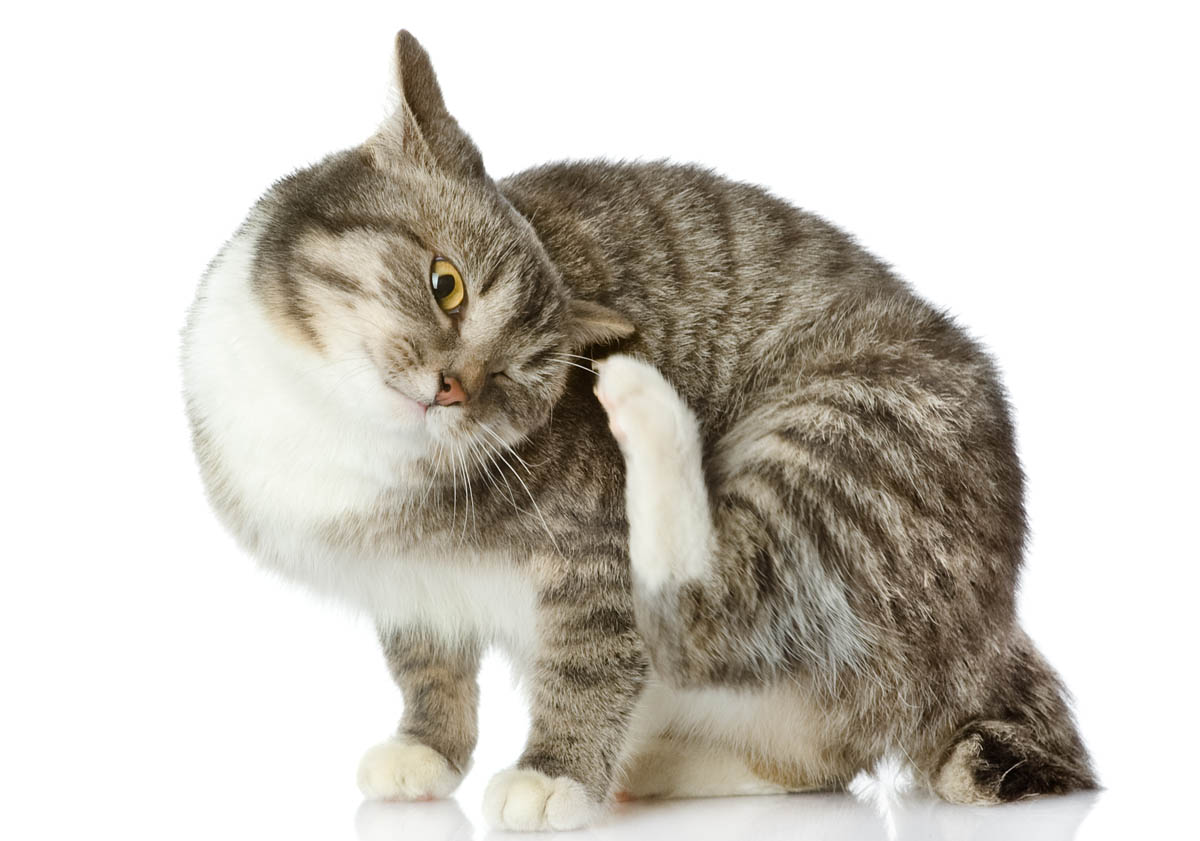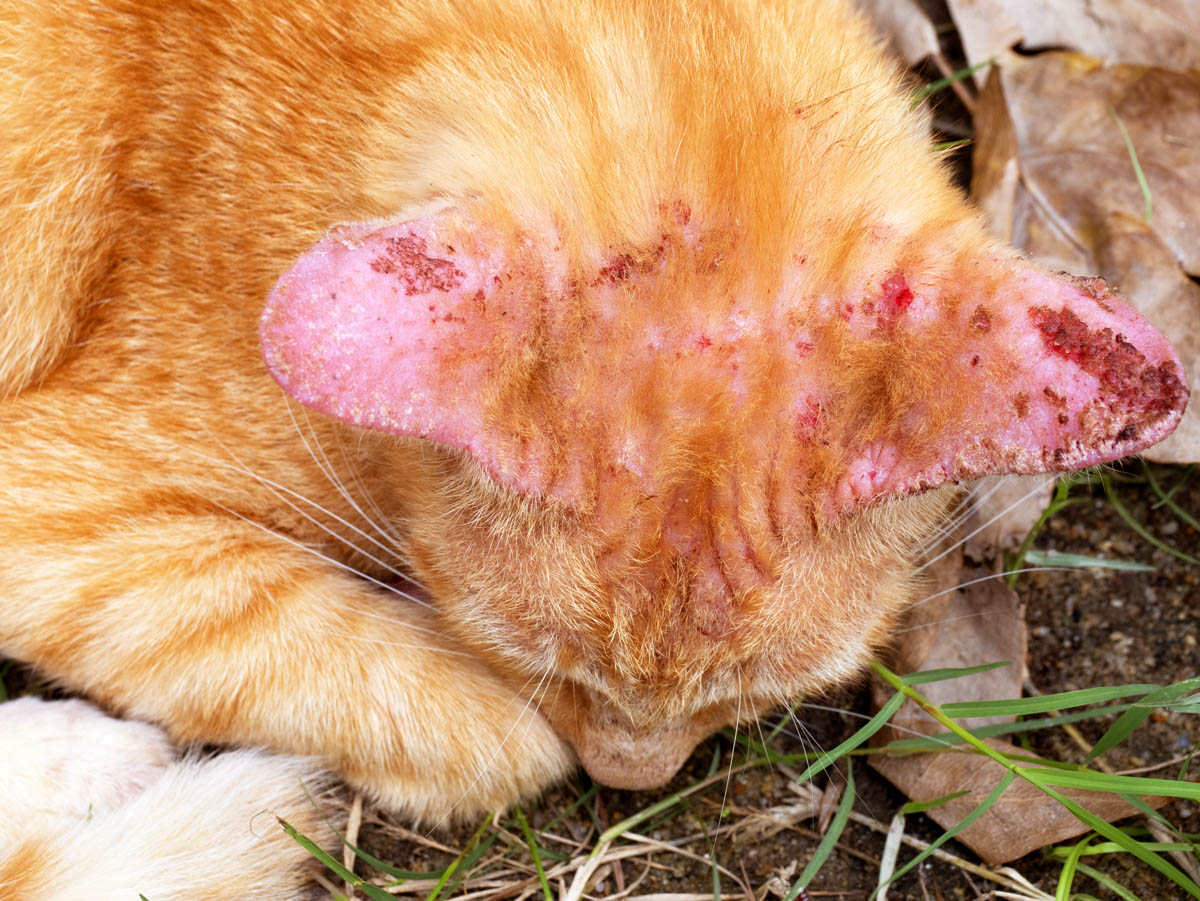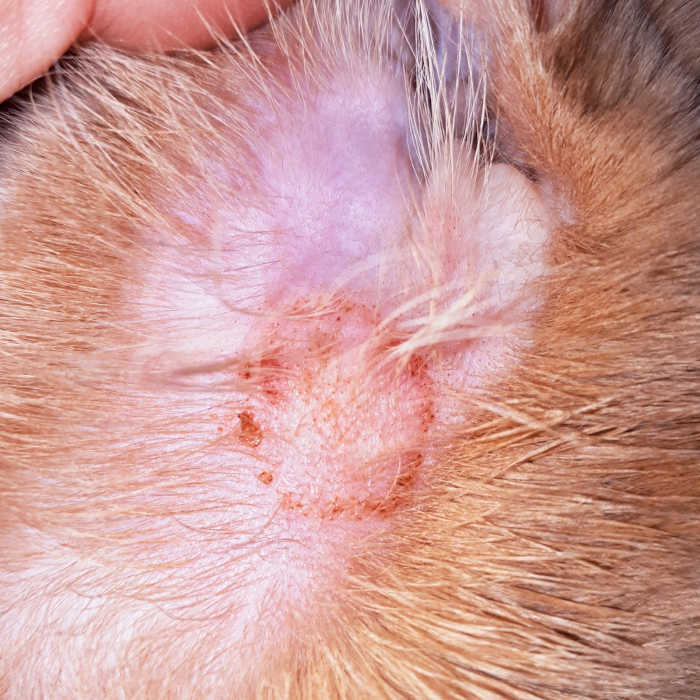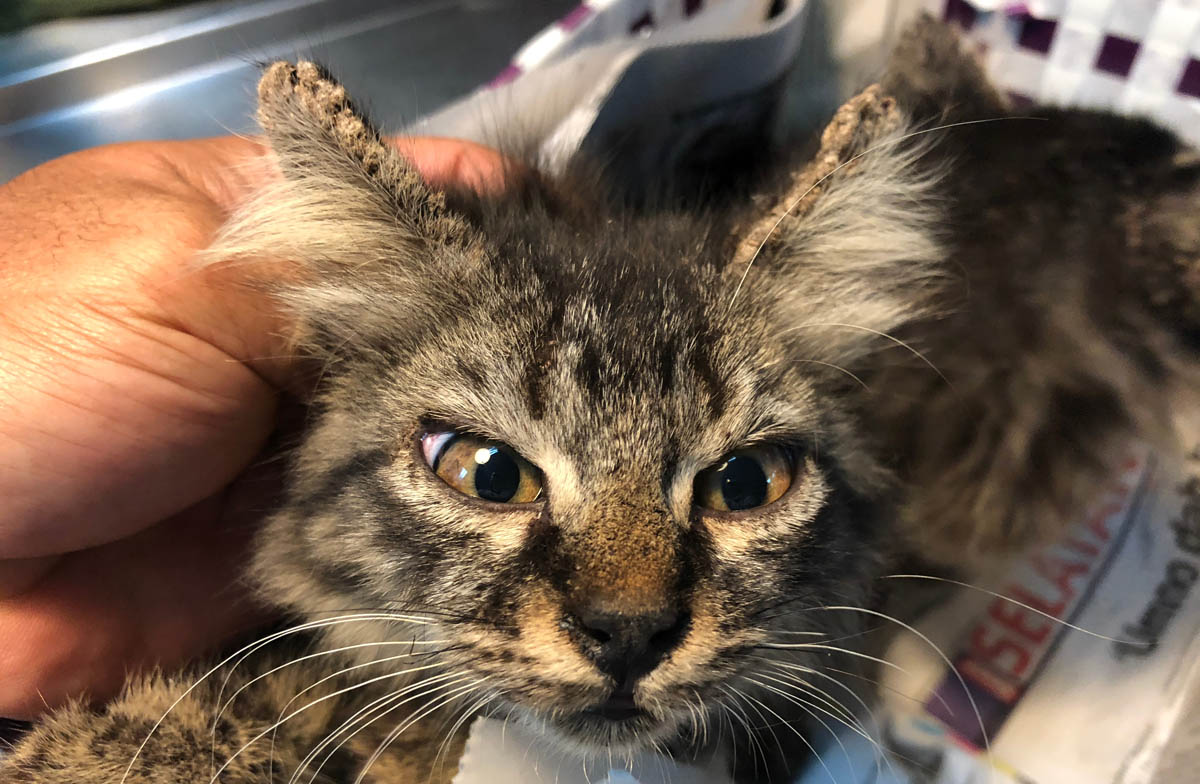When to be concerned
Have you noticed some areas of baldness or hair loss on or around your cat’s ears? You should consider meeting with your veterinarian if you see the following signs:
- worsening hair loss,
- patchiness,
- itching, or
- crusting
Your vet will have various tests and tools to help diagnose hair loss. Skin issues are not always a straightforward, easy fix though. They can be pretty frustrating for both owner and vet since it often takes multiple tests and treatments to help improve the skin. Let’s look at the most common causes and what to do.
Most common causes of feline hair loss on ears
1. Genetics
Some cat breeds are predisposed to either thinner hair or areas of hair loss around their ears. These include Cornish and Devon Rex, as well as Siamese and Burmese breeds.
As your cat ages, a normal amount of hair loss occurs in front of the ears. This hair loss is particularly noticeable in black cats but can happen in any color. With this age-related hair loss, we expect it to be symmetrical and not patchy. Your cat shouldn’t be itchy when hair loss is a normal part of its aging process.
2. Ear mites
Cat ear mites, or Otodectes cynotis, can also cause severe itching and subsequent hair loss around the ears. The mites feed on skin debris, causing the ear canal to become inflamed, itchy, and painful. The ear canal often has wax, blood, and mite debris. The mite debris is usually dark brown to black in color and looks like dirt in the ears. The severe itching and headshaking lead to small cuts, crusting, and hair loss on the ears, face, and neck.

Treatment for ear mites consists of a thorough cleaning of the ears (usually done at the vet’s office) and then an application of ear drops or a topical parasite medication.
3. Fleas
You might be thinking, “My cat doesn’t have fleas. I haven’t seen any on him.” But in cats with flea allergy dermatitis, even one flea bite can cause extreme itching.

Even with dozens of flea bites, the average cat should not experience a severe reaction or itching. In some cats, though, fleas can cause an intensely itchy allergic reaction called flea allergy dermatitis or FAD. FAD is one of the most common allergic skin conditions in cats.
Itching due to FAD affects the back, tail, and face. Cats tend to lose the hair around their ears since they rub their faces to relieve itch. They can also develop secondary bacterial infections. Learn more about getting rid of fleas in cats.
4. Food allergies
Food allergies are far less common in cats than in dogs, and they usually do not cause the same severe skin issues often seen in dogs. Not all cats with food allergies will have gastrointestinal symptoms. If they have gastrointestinal and skin symptoms, this should increase the suspicion of a food allergy.

No medication will specifically cure a food allergy. The most reliable way to relieve symptoms involves diet trials or prescription diets. Most diet trials will last around eight weeks, so it’s essential to realize this will not be a quick fix.
5. Atopy
Atopy refers to an allergic reaction to a contact or inhaled allergen such as pollen or dust that often leads to intense itching around the head, ears, and neck. In an average cat, these substances wouldn’t cause skin issues; in cats with an allergy, they can cause discomfort and severe itchiness. This article goes in-depth into common household allergens for cats.

Secondary bacterial and yeast infections often complicate atopy since the skin’s defenses are weakened.
This diagnosis is often made after ruling out other causes like parasites and food allergies. Atopy typically responds to steroid treatment, while food allergies usually do not. Treatment options vary widely from antihistamines like Benadryl, steroids, and desensitization to the allergen (either with a series of injections or drops placed under the tongue).
6. Ringworm
Ringworm, or dermatophytosis, is a skin condition caused by the fungus Microsporum canis. Skin lesions often begin on the face and ears and then spread to the rest of the body. Ringworm is spread from animal to animal but can also be picked up in the soil.

It usually takes 1-3 weeks after exposure to see visible skin issues, so your cat may be infectious before you ever see skin issues. It is zoonotic, meaning it can spread to people as well. In fact, 50% of owners with a ringworm-infected cat will develop ringworm also.
Because ringworm can spread quickly to other pets and people, swift treatment is essential. One of the best ways to diagnose ringworm is by doing a fungal culture. Your vet will take a hair sample and place it on a petri dish to see if fungal growth is growing. This test can take up to 10-14 days for full results.

Your vet may start treating your cat while waiting for the results of the fungal culture. Treatment typically consists of an antifungal shampoo and oral medication. Decontamination and cleaning of the environment include hair removal, carpet cleaning, and disinfecting surfaces.
There is some evidence that Persian cat breeds may be more at risk, but any cat can develop ringworm. Learn more about ringworms in cats.
7. Mange
Mange is a contagious skin problem caused by notoedric mites. It frequently causes itching, hair loss, and intense scabs and sores. Mange most commonly affects ear margins, forelimbs, and neck regions.

To diagnose these mites, your vet will need to do a skin scrape. A scrape is performed with a needle or scalpel blade to remove cells from the top layers of skin where the mites live. Mites are visible under the microscope with this test.
Mange is contagious to other cats, dogs, and people, but many of the available topical parasite preventatives can treat it. Thankfully this type of mange is quite rare in cats. Learn more about mange in cats.
8. Stress
Cats are sensitive to stresses such as moving, new people or pets, or even down to a change in the brand of litter used. One way cats cope with stress and comfort themselves is by grooming.
This overgrooming can lead to hair loss, called psychogenic alopecia. Cats can’t lick their ears, but they may lick and rub their paws over their ears excessively.
Pain can also be a reason cats lick a specific area more than expected. If your veterinarian has ruled out other causes like allergies and parasites, it may be worth looking into possible painful areas as well.
Treatment Options
Hair loss treatment for your cat’s ears will vary considerably based on the cause. For example, your cat may need antihistamines and steroids for an allergy, but parasite prevention for scabies or mites.
Since parasites are a fairly common reason for your cat to lose ear hair, you should talk to your veterinarian about whether parasite preventatives are suitable for your cat and his lifestyle. There are a lot of safe topical products on the market designed specifically for cats but always consult with your vet before starting one.
Some over-the-counter parasite preventatives can be toxic to cats if not explicitly formulated for them, so check all labels carefully.
Is there anything that cat owners can try at home?
If your cat is already on parasite prevention, there may be other factors to try to eliminate including environmental or food allergies. For example, cleaning your house regularly may help eliminate dust and pollen allergens.
FAQ
Will my cat’s hair grow back?
Once your veterinarian has determined a cause for the hair loss and started treatment, you should begin to see hair regrowth in a few weeks. Remember that complete regrowth can take 2-6 months or longer.
How can I prevent this from happening again?
You’ve probably heard the saying, “an ounce of prevention is worth a pound of cure.” Preventative healthcare – keeping your cat up to date on vaccines, health checks, and parasite control – is one of the most important things you can do to keep him healthy. A healthy cat will have an easier time fighting infections as well.
